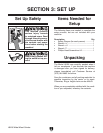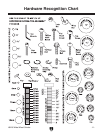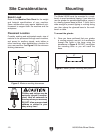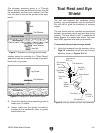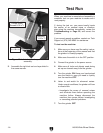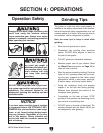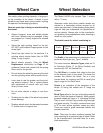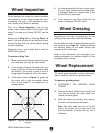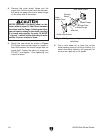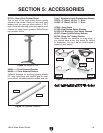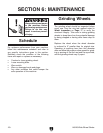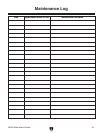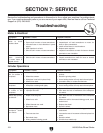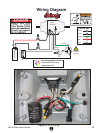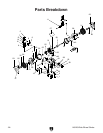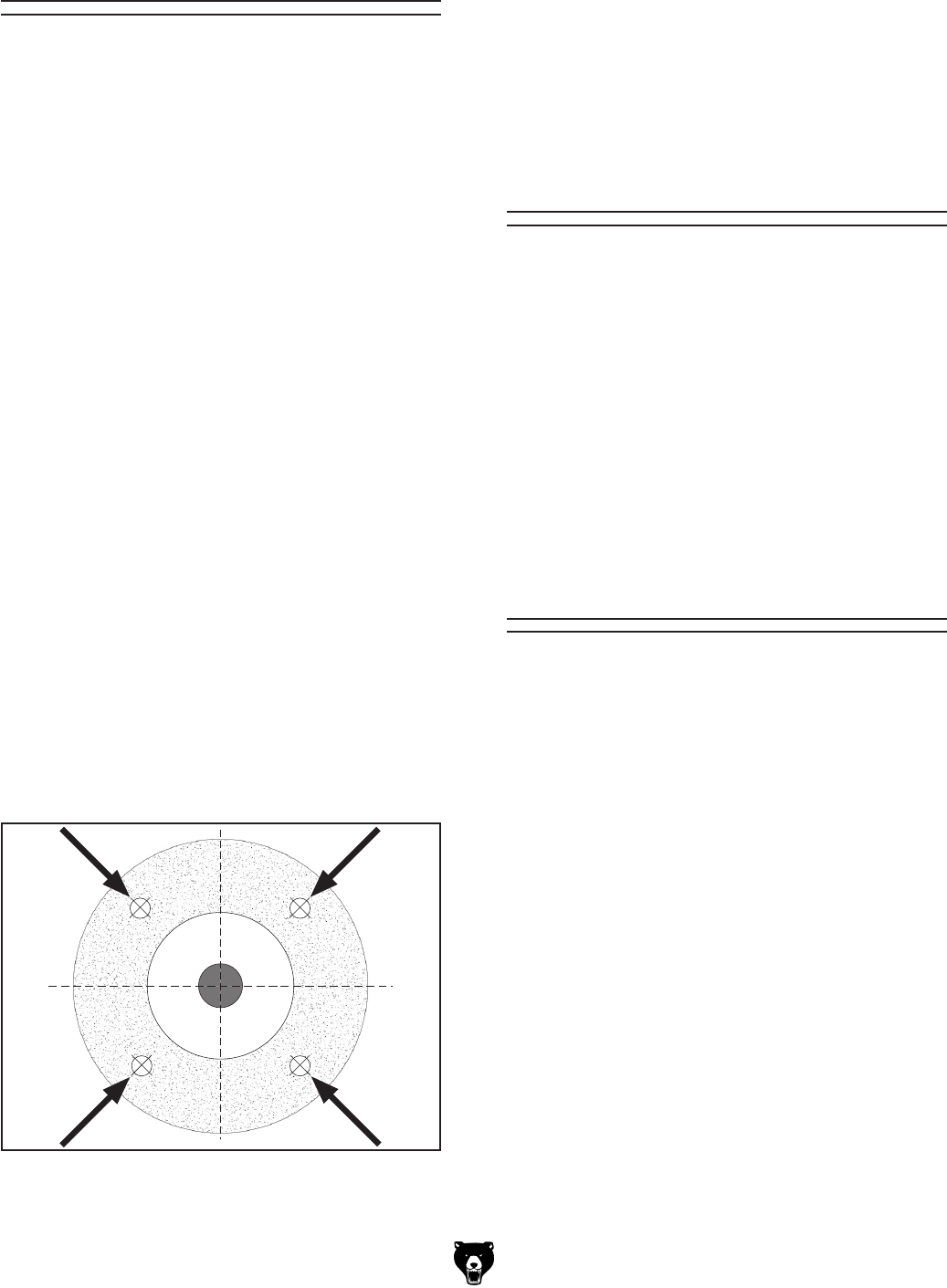
H8126 Wide Wheel Grinder
-17-
Wheel Inspection
Do not assume that a wheel is in sound condition
just because it is new—often damage can occur
in shipping, with age, or with exposure to mois
-
ture. Inspect every wheel for damage.
First, do a Visual Inspection. Look for any
cracks, chips, nicks or dents in the surface of the
wheel. If you see any of these, DO NOT use the
wheel.
Second, do a Ring Test, by following Steps 1-5
below. This test will give you an indication of any
internal damage that may not be obvious during
a visual inspection.
Always be sure to use a wheel that is rated for
3450 RPM or greater.
To perform a Ring Test:
1. Make sure the wheel that you test is clean and
dry; otherwise, you may get false results.
2. If size permits, balance the wheel with your
finger in the hole. If this is not possible, hang
the wheel in the air with a piece of cord or
string looped through the hole in the center.
3. At the spots shown in Figure 11, gently tap
the wheel with a light non-metallic device
such as the handle of a screwdriver or a
wooden mallet.
Figure 11. Tapping locations when performing a
ring test.
4. An undamaged wheel will emit a clear metal-
lic ring or “ping” sound in each of these spots.
A damaged wheel will respond with a dull
thud that has no clear tone.
5. If you determine from the ring test that the
wheel is damaged, DO NOT use it!
Wheel Dressing
Depending on the type of grinding you do, the
grinding wheel may require periodic dressing.
Several different kinds of wheel dressing devices
are available (see Page 19). Dressing restores
the abrasive quality of the wheel surface and
squares up the wheel edge.
Refer to the instructions that accompany your
dressing accessory for complete details on how
to properly dress a wheel.
Wheel Replacement
The wheel guard assembly must be removed in
order to mount or dismount a grinding wheel.
To replace a grinding wheel
:
1. DISCONNECT THE GRINDER FROM
POWER!
2. Remove the three Phillips head screws and
nuts that go through the outer guard, and
remove the outer guard.
3. Block the wheel from turning, then remove
the arbor nut that secures the wheel.
Note: The arbor shaft and nut on the left
side of the grinder (as you face front) has
left hand threads; to loosen this nut, turn it
clockwise.



